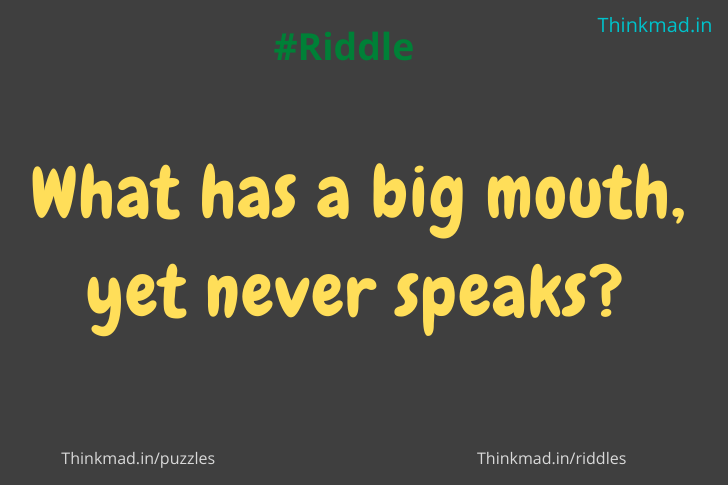Share with
You may also like..
What is it that you ought to keep after you have given it to someone else?
Answer: A promise, of course.
Solution:

What has a big mouth, yet never speaks? Riddle answer
Answer: Jar
Solution:
What has a big mouth, yet never speaks? – Riddle with answer
Show answer
Answer: Jar
The liquid that flows from your nose when you catch cold is called Tupeal in Tamil language.
Share your answers and thoughts in the comments box below
Knowledge increases by sharing 🙂
What has a big mouth, yet never speaks? – Riddle with answer
Show answer
Answer: Jar
The liquid that flows from your nose when you catch cold is called Tupeal in Tamil language.
Share your answers and thoughts in the comments box below
Knowledge increases by sharing 🙂



 Animal Riddles
Animal Riddles  Antonyms Quiz
Antonyms Quiz  Current Affairs
Current Affairs  Difficult Riddles
Difficult Riddles  Dirty Riddles
Dirty Riddles  Easy Riddles
Easy Riddles  Food Riddles
Food Riddles  Good Riddles
Good Riddles  Kids Riddles
Kids Riddles  Math Riddles
Math Riddles  Riddles
Riddles  Short Riddles
Short Riddles  What am I ?
What am I ?